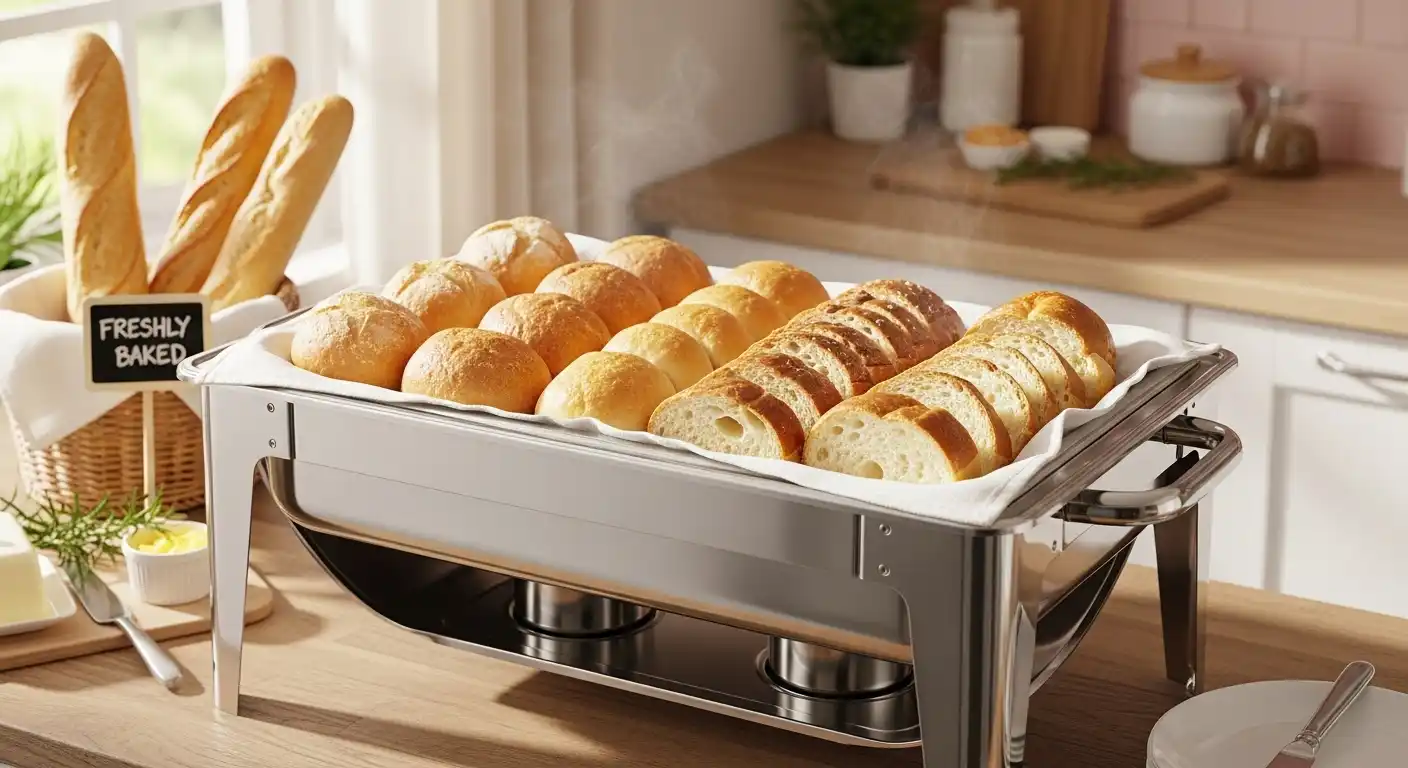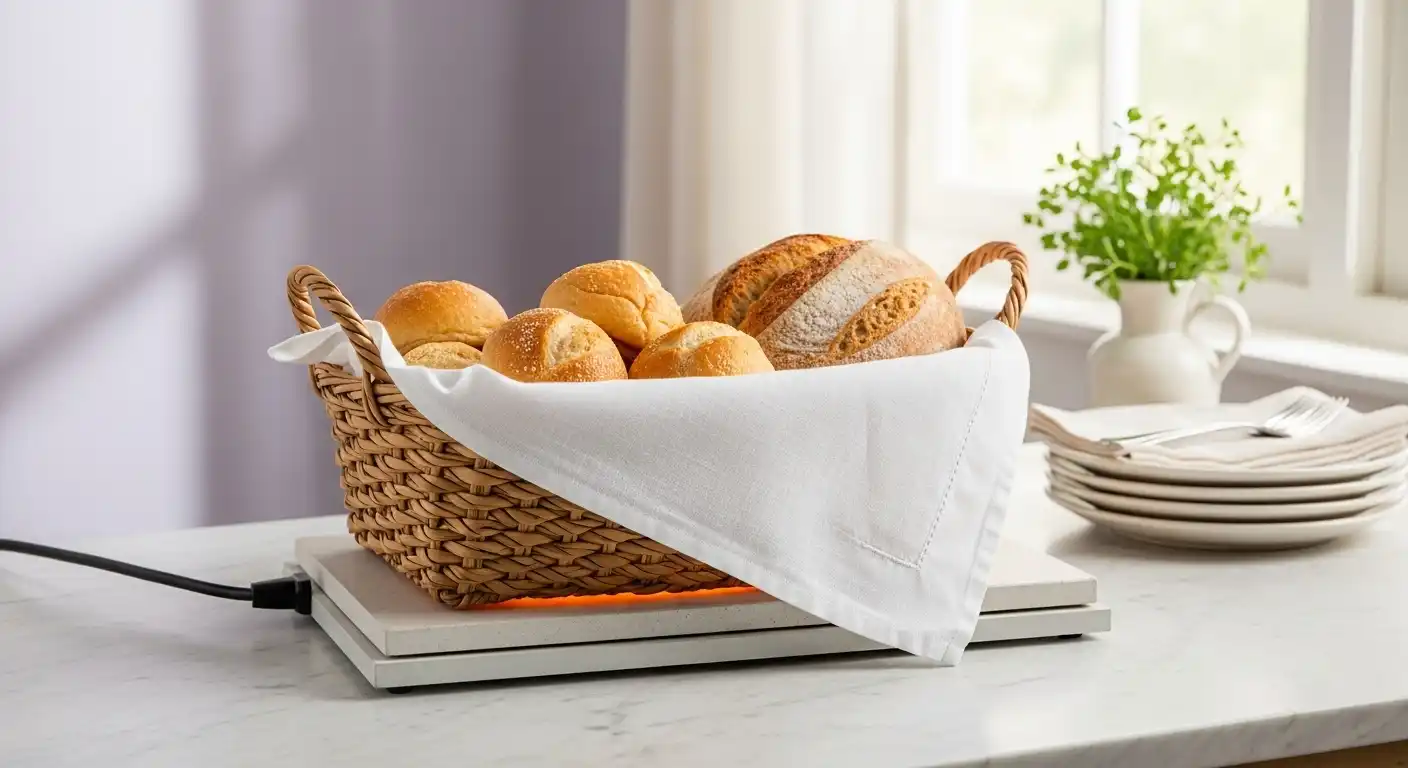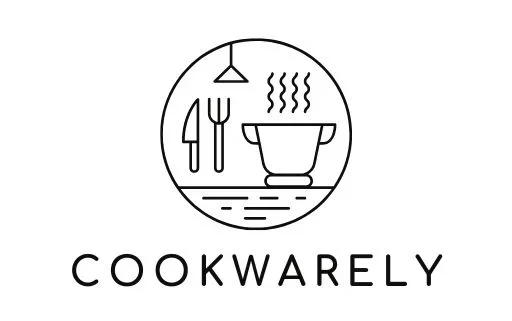Can You Put Bread In A Chafing Dish? Exploring the Possibilities

Chafing dishes are a staple at buffets, catering events, and gatherings, keeping food warm and inviting for hours.
But when it comes to serving bread, a common question arises: Can you put bread in a chafing dish? The answer isn’t a simple yes or no—it depends on the type of bread, the chafing dish setup, and your goals for presentation and texture.
In this guide, we’ll dive into whether bread belongs in a chafing dish, how to do it right, and tips to ensure your bread stays fresh and appealing.
Let’s explore the ins and outs of using chafing dishes for bread and more.
🎃 Spooky Good Amazon Deals This Fall !
From cozy fall essentials to Halloween must-haves, shop Amazon’s seasonal discounts now. Don’t wait, deals vanish fast!
*As an Amazon Associate, I earn from qualifying purchases.
Understanding Chafing Dishes: A Quick Overview
Chafing dishes are designed to keep food warm using a heat source, typically fuel cans or electric heating elements.
They consist of a water pan, a food pan, and a lid to trap heat and moisture.
This setup is ideal for dishes like pasta, meats, or casseroles, but bread presents unique challenges.
Bread, especially fresh or artisanal varieties, can be sensitive to heat and humidity.
Let’s break down whether a chafing dish is suitable and how to make it work.
Can You Put Bread In A Chafing Dish?
Yes, you can put bread in a chafing dish, but it requires careful consideration. Bread can dry out, become soggy, or lose its texture if not handled properly. The key is to understand the type of bread and the chafing dish’s environment.
For example, soft rolls or sliced loaves may fare better than crusty baguettes, which can soften in a humid setting. Let’s explore the factors that determine success.
Factors to Consider When Using a Chafing Dish for Bread
Type of Bread
Not all bread is created equal. Soft dinner rolls, cornbread, or flatbreads can tolerate gentle warmth better than crusty artisan loaves.
Crusty breads like sourdough or baguettes rely on their crisp exterior, which can turn chewy in a moist chafing dish.
If you’re serving soft breads, a chafing dish can keep them warm and inviting.
For crusty varieties, you might want to reconsider or use specific techniques to maintain texture.
Heat Source and Temperature
Chafing dishes typically maintain temperatures between 160°F and 180°F.
🎃 Spooky Good Amazon Deals This Fall !
From cozy fall essentials to Halloween must-haves, shop Amazon’s seasonal discounts now. Don’t wait, deals vanish fast!
*As an Amazon Associate, I earn from qualifying purchases.
This is great for keeping food hot but can be too intense for bread. Excessive heat can dry out bread or make it stale quickly.
To avoid this, consider using an electric chafing dish with adjustable temperature settings.
Lower heat settings can gently warm bread without compromising its quality.
Moisture Control
Chafing dishes with water pans create a humid environment to prevent food from drying out.
However, this moisture can soften bread, especially crusty types. If you’re wondering how much water to put in a chafing dish, less is often better for bread to minimize humidity.
For dry heat, you might explore using a chafing dish without water, though this requires careful monitoring to avoid overheating.
Best Practices for Keeping Bread Warm in a Chafing Dish

If you decide to use a chafing dish for bread, follow these tips to maintain its texture and flavor:
Use a Low Heat Setting
Keep the heat low to avoid drying out the bread. If using a fuel-based chafing dish, ensure the flame is adjusted to a minimal setting.
For electric models, set the temperature to the lowest effective level.
Check out how hot chafing dishes keep food for more on managing heat levels.
Line the Pan with a Cloth
Place a clean, heat-resistant cloth or parchment paper in the food pan before adding bread.
This can absorb excess moisture and prevent the bread from sticking to the metal surface.
🎃 Spooky Good Amazon Deals This Fall !
From cozy fall essentials to Halloween must-haves, shop Amazon’s seasonal discounts now. Don’t wait, deals vanish fast!
*As an Amazon Associate, I earn from qualifying purchases.
For crusty breads, consider wrapping them loosely in foil to protect the crust while keeping the interior soft.
Limit Time in the Chafing Dish
Bread shouldn’t sit in a chafing dish for too long. Aim for a maximum of 1-2 hours to prevent texture changes.
For longer events, replenish the bread in small batches to maintain freshness.
Learn more about how long food can stay in a chafing dish to plan your buffet effectively.
Choose the Right Bread
Soft breads like dinner rolls, brioche, or cornbread are ideal for chafing dishes.
If you’re serving crusty breads, consider slicing them just before serving to preserve their texture.
For inspiration, see how other foods like pancakes or waffles are kept warm in chafing dishes.
Alternatives to Chafing Dishes for Bread

If a chafing dish isn’t ideal for your bread, consider these alternatives:
Bread Baskets with Warming Stones
A bread basket with a heated stone or ceramic insert can keep bread warm without the humidity of a chafing dish.
This is perfect for crusty loaves that need to stay crisp.
🎃 Spooky Good Amazon Deals This Fall !
From cozy fall essentials to Halloween must-haves, shop Amazon’s seasonal discounts now. Don’t wait, deals vanish fast!
*As an Amazon Associate, I earn from qualifying purchases.
Oven on Low Heat
Keep bread warm in an oven set to 150°F-200°F, loosely covered with foil.
This method works well for large quantities but requires more space than a portable chafing dish.
Insulated Bread Warmers
Insulated bread warmers or thermal bags are another option. They’re less bulky than chafing dishes and can maintain warmth for smaller gatherings.
Common Mistakes to Avoid
Overheating the Bread
Too much heat can turn bread into a dry, unappetizing mess. Always monitor the chafing dish’s temperature and adjust as needed.
Ignoring Moisture Levels
Excess moisture from the water pan can ruin crusty bread. If you’re using a water pan, keep it minimal or consider a dry setup.
Leaving Bread Too Long
Bread left in a chafing dish for hours will lose its appeal. Rotate stock frequently to ensure guests enjoy fresh, warm bread.
For more on chafing dish maintenance, check out how to clean a chafing dish.
Pairing Bread with Other Chafing Dish Foods
Bread can complement other dishes in your chafing dish buffet. For example, serve warm rolls alongside pasta, soups, or stews kept hot in separate chafing dishes.
If you’re wondering about other foods, explore whether you can keep pizza warm in a chafing dish or how to keep fish and chips from getting soggy.
Consider the size of your chafing dish to ensure it fits your buffet setup. Learn about chafing dish dimensions or how many chafing dishes fit on a 6ft table for planning.
Choosing the Right Chafing Dish for Bread
Not all chafing dishes are created equal. For bread, consider these factors:
Size and Capacity
Choose a chafing dish that matches your serving needs. An 8-quart chafing dish is often sufficient for bread at medium-sized events.
🎃 Spooky Good Amazon Deals This Fall !
From cozy fall essentials to Halloween must-haves, shop Amazon’s seasonal discounts now. Don’t wait, deals vanish fast!
*As an Amazon Associate, I earn from qualifying purchases.
Fuel vs. Electric
Electric chafing dishes offer better temperature control, which is crucial for bread. Learn how to choose the best electric chafing dish for your needs.
Disposable vs. Reusable
For one-time events, disposable chafing dishes can be convenient. For regular use, invest in a durable set.
Final Thoughts: Bread and Chafing Dishes
So, can you put bread in a chafing dish? Absolutely, but it’s all about execution.
By choosing the right bread, controlling heat and moisture, and limiting time in the dish, you can serve warm, delicious bread that delights your guests.
Whether you’re hosting a buffet or a small gathering, a chafing dish can be a versatile tool.
For more tips on using chafing dishes effectively, check out how to use a chafing dish or explore the best chafing dish buffet sets for your next event.
With the right approach, your bread can shine alongside other buffet favorites, keeping your guests coming back for more.
